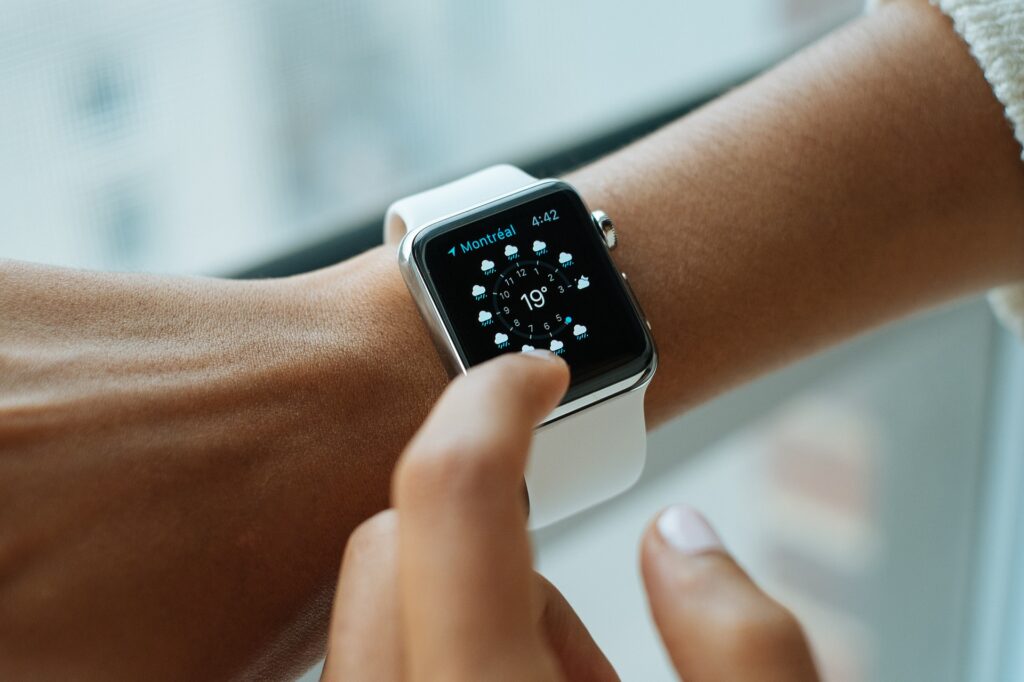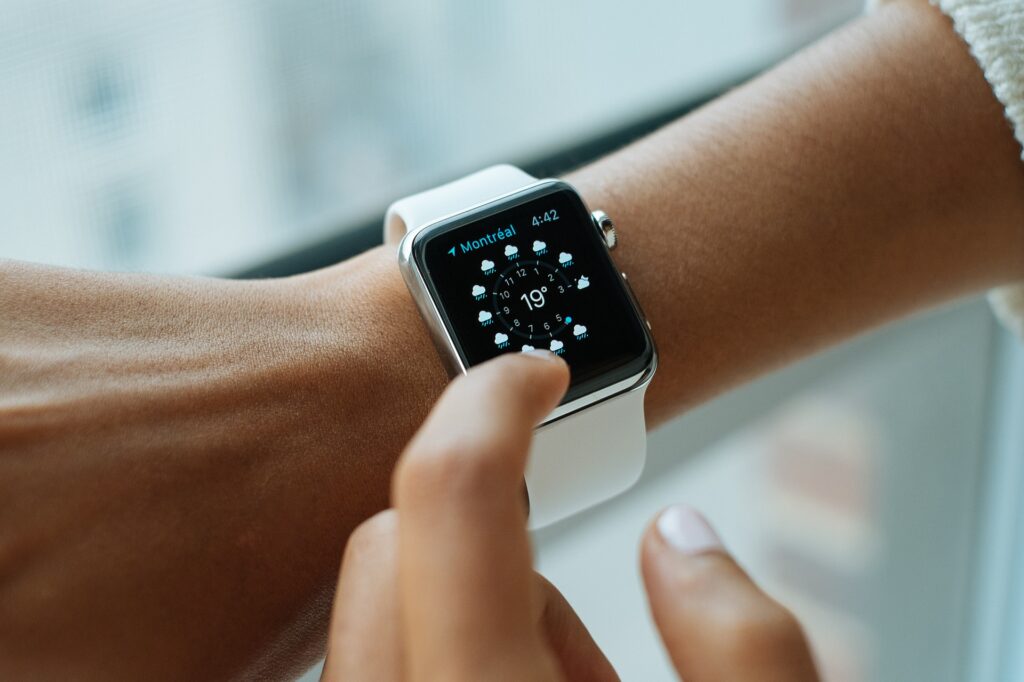Wearables in Finance are the next FinTech frontier. What’s their role and why are they such a big thing? We explain the business opportunity, how they work and what issues they face.

When Tim Cook stepped on the stage on Thursday to present Apple’s new products, the upgrade to its Apple Watch stole the limelight from it new range of iPhones. The company praises its redesign to help you stay even more active and healthy, and while the awe effect certainly comes from its new features that let you monitor your heart rate and comes with an added fall-detection function, there are obviously plenty of other functions the smartwatch comes with. So, what better time to have a look at the role wearables play in finance?
What are wearables?
First, let’s explain quickly what we mean by wearables though. Wearables are also known as wearable technology, fashionable technology, wearable devices, tech togs, or fashion electronics, but they are essentially all the same: they are smart electronic devices that we can wear on the body as an accessoire like the Apple Watch – or implant as well as integrated into our clothes – like this football jersey that lets fans pay for the bratwurst and beer straight from the shirt.
The market opportunity
Whether we needed a shirt to pay for food or not is a different question, but in general the wearable devices market is big business. A report by Technavio estimated the market to reach $38 billion by 2021, so no wonder Apple has entered the arena and makes such an effort to become the front runner. The market research report segments the global industrial wearable devices market into the four major products: wrist computers, ring scanners, smart terminals, and smart glasses. Out of the four major products, the wrist computers segment held the largest market share in 2017, accounting for nearly 44% of the market. However, the market share for this application is expected to decrease nearly 15% by 2022. The fastest growing product is smart glasses, which will register a growth of 23% by 2022, the report states, which probably means that we will see a revival of the failed Google Glass attempt.
How do wearables in Finance work?
Remaining with the Apple Watch, thanks to Apple Pay you can pay with your smartwatch in the same way you use the NFC technology in your iPhone. Google Pay for (some) Android devices and Samsung Pay for its popular Samsung Gear smartwatch work in the same way. Near-field communication (that’s what NFC stands for, in case you wondered) pairs two electronic devices, one being your smartwatch, to make a transaction. It’s not only the tech giants but financial institutions that use this approach, too. Barclays, the UK bank, for instance, has introduced its bPay services to connect its customers with a range of wearable contactless payment devices. And since they are basically small smartphones there are also a number of apps for financial services like transaction alerts, balance enquiries, or real-time receipts. Others offer apps focus on the trading and investment sector, providing information regarding price movements of financial instruments or let you directly deal in shares and other securities.
The next step of the wearables revolution in Finance is the use of such devices for customer identification. By using a smartwatch for example, biometrics can seamlessly authenticate its owner and render passwords obsolete. The device uses sensors that identify unique body parts like a user’s fingerprint or in the case of a smartwatch the wrist veins and are therefore much more secure than signatures or passwords.
The big game changer comes in the form of customer data and client understanding though: the main objective of the internet of things is the increased connectivity of the devices we use and that as such produce large amounts of data and information about us. As in other parts of FinTech, the correct use of this information to gain a better customer understanding is the real value of this revolution.
What about Compliance?
The advantages of biometric identification through wearables is actually something that could improve compliance services. Will we see Compliance officers running around and receive insider trading alerts on their Apple Watches? Unlikely. If we are honest the use case is too insignificant to warrant an application simply to notify the compliance function through a wearable device as opposed to traditional devices like smartphones. But what about surveillance of staff? Wouldn’t it be great to always know where your employees are and that they aren’t, say, sitting in the pub during working hours? No, it wouldn’t. Even if there are supporters of a dystopian workplace in reminiscence of 1984, thankfully privacy laws protect us from such an obvious violation of our rights though that doesn’t mean that we are not already happily and freely giving away a lot of personal information as recent data scandals like Facebook’s show. No, for now wearables have found their place on in Health Safety and Environmental Compliance rather than in Financial Services Compliance and it looks like it is to remain like this for the foreseeable future.
Stumbling blocks?
It’s despite all the positives outlined above, for wearables to realise their potential, a number of issues need to be addressed. First of all, there are serious concerns about the security that surround smartwatches like Bluetooth theft or software viruses. Data security therefore needs to be a priority for developers.
Another aspect is the question about which problem a wearable solves as opposed to other devices or ways to achieve the same result. For instance, if I already use my iPhone for Apple Pay, is an Apple Watch really much progress because I don’t need to get it out of my pocket? Innovation always needs to serve a purpose instead of simply being its own purpose. But since Apple got to be the first trillion-dollar company by turning existing inventions into efficient products with a vision of what works, they probably have thought of that…

